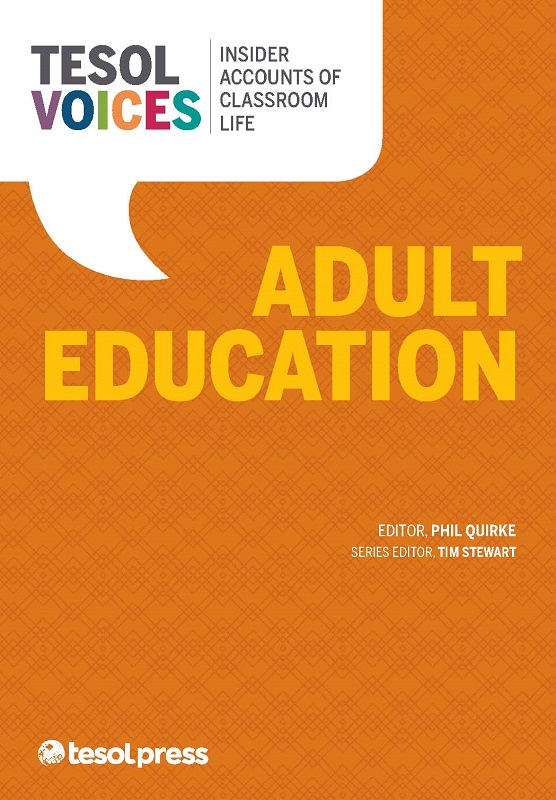Grammatically Speaking
by Michelle Jackson
 How to Teach The Future Tense
How to Teach The Future Tense
The beginning of a new semester is a precious time when a classroom community can be established and later built upon. A classroom community creates a sense of belongingness and connectedness for students. Within such a community, students know their learning will be supported by their peers, which can positively impact their motivation (Richards & Farrell, 2011). In a language classroom, where interaction is essential to acquisition, the community provides students a safe place to try new verbal forms or add vocabulary from their reading to their writing. The community prizes effort and views mistakes as integral to learning.
The chief challenge with community is that it does not naturally occur. It must be purposefully designed and built by the instructor, who encourages active participation and engagement from all students. One way to build community at the start of a semester is to have students develop a set of seven norms for classroom behavior. These expectations will govern how the community interacts as well as what obligations members agree to fulfill.
Additionally, as the norms are written in the future tense, this method allows students to practice grammar and develop their understanding in the context of real-world communication. I have used this technique with introductory college-level ESL students, who appreciated the inclusion of their voice in course norms.
Materials Required
- Paper and writing utensils for all students
- Chalkboard, whiteboard, or doc cam and writing utensils
Timing: 30 minutes
Step 1
Summarize the future tense for students. The future consists of the word will followed by the base form of the verb. For example, I will grade exams this afternoon. My cousin will find a job after graduation. We will write four essays this semester. Tell students they will use the future tense to craft a set of class norms that everyone will follow. (3 minutes)
Step 2
In groups of three, have students brainstorm answers to the following questions (5 minutes):
- What student behaviors support my learning?
- What teacher behaviors support my learning?
Step 3
Groups will use their responses to the questions to craft five statements in the future tense. For example, if students believe that peers’ in-class participation is essential to their learning, one of their five statements might read: Students will come to class prepared to participate. –or– Students will bring all necessary materials to class. (5 minutes)
Step 4
Each team will share their five statements. While teams share, summarize the statements on the board and sort them into categories. You should also draw the students’ attention to the correct use of the future tense. (10 minutes)
Step 5
Once all teams have shared their statements, say that, together, you will narrow all the teams’ statements down to seven norms that the class will follow throughout the semester or the year. The statements that were most often mentioned by the teams should make the short list of norms. (7 minutes)
Step 6
After the class has agreed upon the final set of seven norms, post them either in the classroom or online in the learning management system (preferably both). These norms should be referenced often, reminding students that these behaviors were created by and for the classroom community to ensure everyone’s success.
Happy teaching,
Michelle
Reference
Richards J. C., & Farrell, T. (Eds.). (2011). Practice teaching: A reflective approach. New York, NY: Cambridge University Press.
Dr. Michelle Jackson is the associate director of teaching at New Mexico State University’s (NMSU's) Teaching Academy. She designs, develops, and delivers workshops on a variety of teaching and learning topics. Prior to NMSU, she was the manager of the English Language Institute at UT El Paso. She has taught English as a second language at UT El Paso and Harvard University as well as Spanish at UT Austin.
TESOL Blogs
Interested in writing a blog for TESOL?
Read the submission guidelines and send us your post!
Check out a few recent TESOL Blog posts:
|
5 Ways School Principals Can Support English Learners, by Judie Haynes
 English learners (ELs) bring a wealth of experiences from their families, homes, neighborhoods, and communities to school. Children with diverse linguistic and cultural backgrounds have stories and experiences that are unique and will enrich the culture of your school. School principals need to use these experiences to help general education staff and students begin to understand other cultures. They should build on the knowledge their EL students and families have of the countries they come from and the cultures they represent. Here are some five additional thoughts on what school principals need to do to support the ELs in their school and build an optimal educational environment for them. Read more. English learners (ELs) bring a wealth of experiences from their families, homes, neighborhoods, and communities to school. Children with diverse linguistic and cultural backgrounds have stories and experiences that are unique and will enrich the culture of your school. School principals need to use these experiences to help general education staff and students begin to understand other cultures. They should build on the knowledge their EL students and families have of the countries they come from and the cultures they represent. Here are some five additional thoughts on what school principals need to do to support the ELs in their school and build an optimal educational environment for them. Read more.
|
|
7 Projects to Help Students Write for Audiences Beyond the Classroom, by Elena Shvidko
 Most assignments we assign in a writing class are created for the sole reader—the teacher. However, there is no reason students should write only for their teacher. Sharing their ideas with a broader audience can increase student motivation, encourage them to further develop their writing skills, help them connect and interact with many people from all over the world, and in some cases, even assist someone. In this post, I’d like to share a few examples of projects that you can implement in your course to help your students write for an audience beyond the classroom. Read more. Most assignments we assign in a writing class are created for the sole reader—the teacher. However, there is no reason students should write only for their teacher. Sharing their ideas with a broader audience can increase student motivation, encourage them to further develop their writing skills, help them connect and interact with many people from all over the world, and in some cases, even assist someone. In this post, I’d like to share a few examples of projects that you can implement in your course to help your students write for an audience beyond the classroom. Read more.
|
|
3 Tips for Adapting to Your Host Culture, by Maxi-Ann Campbell
 This is the third blog in a four-part series on teaching English abroad. When people go abroad to work, they have the very best of intentions about learning the language, making friends, and so much more. This post discusses three common problems in fulfilling those intentions and offers suggestions. Read more. This is the third blog in a four-part series on teaching English abroad. When people go abroad to work, they have the very best of intentions about learning the language, making friends, and so much more. This post discusses three common problems in fulfilling those intentions and offers suggestions. Read more.
|
TESOL Bookstore

Featured Resources from TESOL Press
 Teaching English to Chinese Learners in U.S. Colleges
Teaching English to Chinese Learners in U.S. Colleges
Ke Xu and Liglan Cao
Gain an in-depth understanding of the Chinese learner to improve your teaching practices and help your students succeed. Take a step back from familiar contexts and examine how institutional structures, the relationship between the U.S. and a student's country of origin, and the student's motivations and attitudes all play a role in their English learning.
 TESOL Voices: Adult Education
TESOL Voices: Adult Education
Tim Stewart, Editor
Follow the triumph and trials of real-life students as they learn English, whether they're pursuing it for their vocation, as immigrants to a new country, for travel, or for their very survival.
 More Than A Native Speaker: An Introduction to Teaching English Abroad, Third Edition
More Than A Native Speaker: An Introduction to Teaching English Abroad, Third Edition
Don Snow and Maxi-Ann Campbell
In this newly updated third edition, learn step-by-step how to effectively teach English abroad. Gain valuable tips and resources for teaching in an unfamiliar educational system, working with students of varying ages and skill levels, and adapting to life in a different culture. A rich array of online resources and activities included.